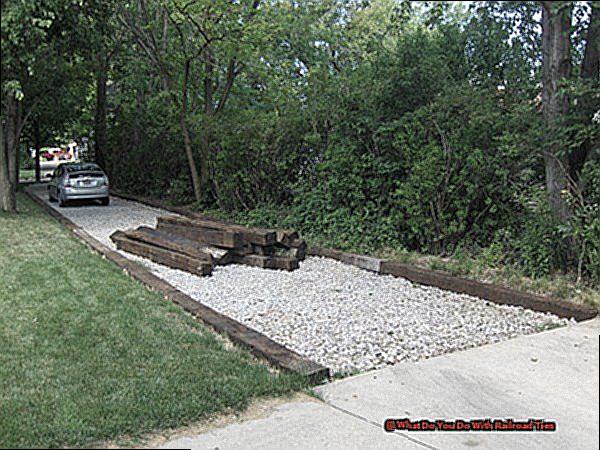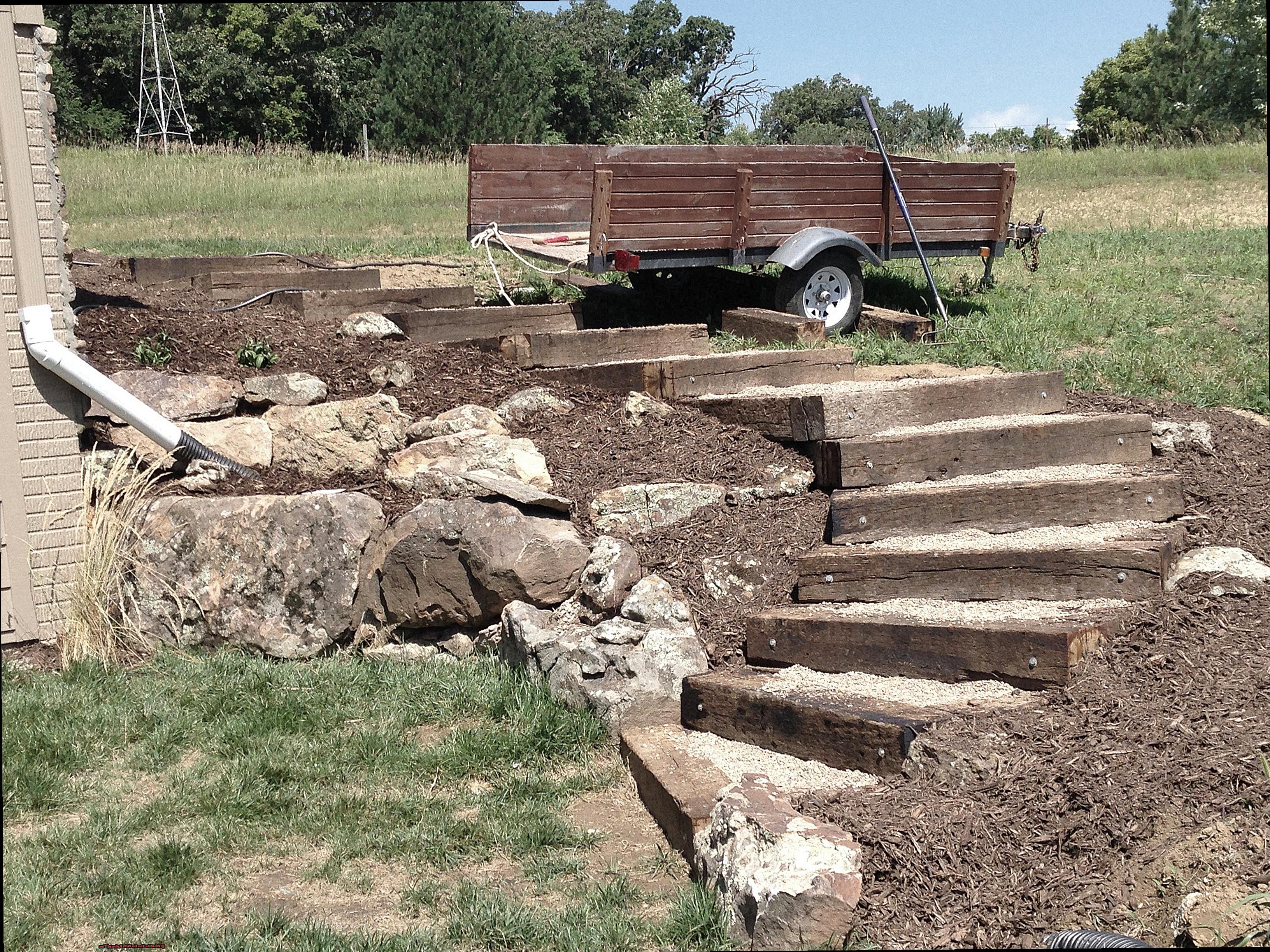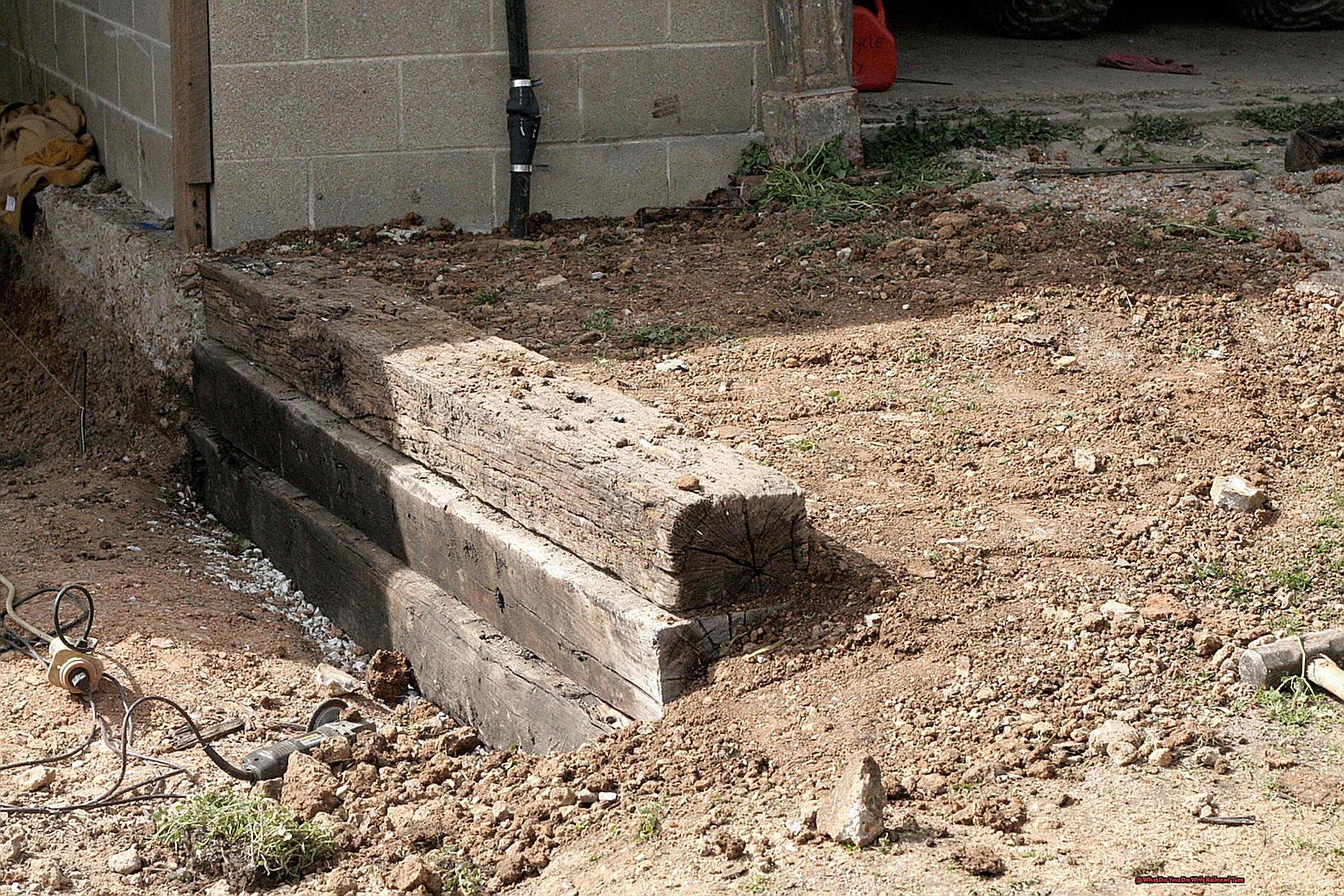Who knew that railroad ties could be more than just a functional part of the railway system?
These strong and durable wooden beams have been repurposed in countless creative ways, adding a touch of rustic charm to any project. Whether you’re looking to spruce up your garden or give your home some unique character, railroad ties are the perfect material for the job.
So put on your DIY hat and join me as we explore the endless possibilities of this often overlooked material.
What Do You Do With Railroad Ties?
Contents
- 1 What Do You Do With Railroad Ties?
- 2 Understanding the Disposal of Railroad Ties
- 3 Reuse and Repurpose Options for Railroad Ties
- 4 Recycling Railroad Ties: Process and Potential Uses
- 5 Donating or Selling Used Railroad Ties
- 6 Proper Disposal Methods for Railroad Ties
- 7 Environmental Impact of Improperly Disposing of Railroad Ties
- 8 Conclusion
If you’ve ever traveled by train, you may have noticed the wooden or concrete beams that support the railroad tracks. These are known as railroad ties, and they play a crucial role in the safe and efficient operation of trains. However, as railroads update their infrastructure and replace old ties with new ones, the question arises: what should be done with the old railroad ties?
Simply disposing of them in a landfill may seem like the easiest solution, but it’s not the most environmentally friendly option. Railroad ties are considered treated wood and can contain harmful chemicals that can leach into the soil and water. So what are some sustainable options for disposing of old railroad ties? Let’s explore some environmentally friendly solutions.

Reuse or Repurpose
One option is to repurpose the railroad ties for other uses. This can include using them as landscaping borders, garden edging, or even furniture. However, not all railroad ties are suitable for repurposing as they may contain harmful chemicals. It’s important to do thorough research and ensure that the ties are safe for use before attempting to repurpose them. Some companies also specialize in reclaiming and reselling used railroad ties for these purposes.
Recycle
A more sustainable solution is to recycle the railroad ties. This involves breaking them down into smaller pieces and using them as fuel for energy production. Some companies also offer recycling services specifically for railroad ties, where they are shredded and turned into mulch or composite materials. However, it’s important to note that not all recycling facilities accept railroad ties, so it’s essential to do thorough research before attempting to recycle them.
Donate or Sell
If you’re unable to find a way to reuse or recycle your old railroad ties, another option is to donate or sell them. Farmers may use them for fencing, artists may use them for sculptures, or individuals may use them for DIY projects. By donating or selling them, you’ll be reducing waste and supporting sustainability efforts.
Proper Disposal
If none of the above options are available, there are professional services that specialize in disposing of railroad ties in an environmentally responsible manner. It’s important to properly dispose of old railroad ties to prevent any potential harm to the environment and ensure their safe removal from railroads.
Understanding the Disposal of Railroad Ties
Railroad ties, also known as crossties or sleepers, have been a crucial part of the railway industry for decades. However, as technology and materials have advanced, these wooden supports are being replaced with more modern alternatives, leaving many wondering how to properly dispose of old railroad ties.

Before you make any decisions about disposing of railroad ties, it’s important to understand their potential for reuse. If the ties are still in good condition, they can be repurposed for various DIY projects such as building raised garden beds or pathways. This not only gives the ties a new life but also saves you money on buying new materials.
But what if the ties are no longer usable? Burning them is not an option as it can release harmful chemicals into the air. Throwing them into landfills is also not recommended as it can contaminate the soil and groundwater. So, what should you do?
The first step is to check with your local government or waste management authority for any regulations or guidelines on disposing of treated wood products like railroad ties. Improper disposal can result in fines or penalties, so it’s crucial to follow proper procedures.
One option is to hire a professional disposal service that specializes in handling treated wood products. They have the necessary equipment and expertise to safely remove and dispose of the ties without causing harm to the environment.
Recycling facilities may also accept railroad ties for processing. These facilities have methods in place to safely remove and treat the creosote from the ties before recycling the wood for other purposes.
For those with a large number of railroad ties to dispose of, consider selling them to a salvage yard or individuals looking for used ties for their own projects.
Reuse and Repurpose Options for Railroad Ties
Are you looking for ways to dispose of old railroad ties without harming the environment? Look no further. As an expert on sustainable solutions, I have gathered a variety of creative and eco-friendly options for repurposing and reusing railroad ties. Say goodbye to waste and hello to a new life for these wooden supports.
Landscaping:
One popular way to reuse railroad ties is by incorporating them into landscaping projects. Their sturdy construction makes them ideal for creating raised garden beds, retaining walls, or edging for pathways. The weathered and rugged look of railroad ties adds a unique touch to any outdoor space.
Furniture and Home Decor:
Who says furniture has to be made of brand new materials? Railroad ties can be transformed into benches, coffee tables, or even headboards for beds. Their natural color and texture add character and charm to any room. Don’t be afraid to get creative with your home decor.
Gardening:
For those with a green thumb, railroad ties can also be used in gardening projects. They make great planters for flowers, herbs, and vegetables. Their deep pockets and sturdy construction provide the perfect environment for a variety of plants to thrive.
Firewood:
If you have a fireplace or fire pit, consider using railroad ties as firewood. The dense, heavy wood burns slowly and provides long-lasting heat. Just make sure to properly dry and season the ties before using them as firewood.
DIY Projects:
Railroad ties can also be used in a variety of DIY projects. Cut them into smaller pieces to make coasters or trivets. Get crafty and use them to create picture frames or shelving units. The possibilities are endless.
Building Projects:
For the more adventurous DIYers, consider using railroad ties in building projects such as constructing sheds or small cabins. Their sturdy construction makes them suitable for structural purposes.
Donation:
If you don’t have a use for the ties yourself, consider donating them to organizations that could use them in their projects. Community gardens, schools, or non-profit organizations may have a need for railroad ties and will appreciate the donation.
Recycling:
Lastly, if all else fails, railroad ties can be recycled into mulch or biomass fuel. Many recycling centers accept railroad ties for this purpose, diverting them from ending up in landfills.
Recycling Railroad Ties: Process and Potential Uses
Don’t let your old railroad ties end up in a landfill, causing harm to the environment. Instead, consider recycling and repurposing them into something useful and sustainable. As an expert on recycling railroad ties, I’m here to share some valuable insights and tips for safely disposing of these treated wood materials.
First and foremost, it’s important to understand that railroad ties are typically made from treated wood. This means they have been treated with chemicals to protect against decay and damage from insects and weather. Due to this treatment, they cannot be disposed of in regular landfills as they can release harmful substances into the environment.
But fear not, there are plenty of options for recycling and repurposing these wooden supports. The first step is to remove any metal spikes or plates that hold the ties together. Once that’s done, the wood can be shredded or chipped into smaller pieces. These wood chips can then be used as fuel for biomass energy production or as mulch for landscaping and gardening purposes.
In fact, some recycling facilities even use the shredded wood to create particleboard or composite materials for construction projects. Not only is this a great way to repurpose the ties, but it also helps reduce the demand for new lumber and saves trees.
But what about whole railroad ties that are no longer usable for their original purpose? Well, there are still plenty of potential uses for them. They can be turned into furniture, used for building retaining walls or raised garden beds, or even used as decorative pieces in gardens or outdoor spaces. However, it’s important to note that if using railroad ties for these purposes, they should not be in contact with soil or water to prevent any potential leaching of chemicals.
Donating or Selling Used Railroad Ties
Are you looking to get rid of those old, worn-out railroad ties taking up space in your backyard? As a recycling expert, I understand the importance of disposing of materials responsibly. In this guide, I’ll share with you the options for donating or selling your used railroad ties and how to do it safely.
Donating Your Used Railroad Ties
One sustainable option for disposing of railroad ties is by donating them. Many organizations, such as community gardens, parks, and schools, may be in need of these materials for their projects. By donating your used railroad ties, not only are you reducing waste in landfills, but you’re also helping these organizations save money.
Selling Your Used Railroad Ties
If your railroad ties are in good condition, you can also sell them to individuals or companies who need them for their own projects. This can be done through online platforms like Craigslist or eBay, or through local classifieds and social media groups. Not only will you be getting rid of your old ties, but you’ll also be making some extra cash.
Safety First: Checking for Hazards
Before donating or selling your used railroad ties, it’s important to ensure that they are safe for use. Check for any signs of rotting or insect infestation, as these can make the ties unsafe for use. It’s also crucial to disclose any information about the history of the ties, such as if they were treated with chemicals or used for hazardous materials transport.
Giving Your Ties a Second Life
Donating or selling your used railroad ties not only helps reduce waste but also gives them a second life. These materials can be repurposed for various projects such as garden borders, retaining walls, or even furniture. This is not only environmentally friendly but also a cost-effective option for those in need of these materials.
When All Else Fails: Proper Disposal Methods
If you are unable to find someone to donate or sell your used railroad ties to, don’t worry. You can always contact your local waste management agency for proper disposal options. Depending on your location, they may have specific guidelines for disposing of railroad ties, so it’s important to follow their instructions.
Proper Disposal Methods for Railroad Ties
As a railroad tie expert, it’s important to not only understand the importance of these materials in the railway system, but also their proper disposal methods. Whether you’re a homeowner with a few old ties in your backyard or a company looking to get rid of a large quantity, it’s crucial to follow regulations and guidelines for responsible disposal.
The first step in disposing of railroad ties is determining whether they are treated or untreated. Treated ties have been treated with chemicals, such as creosote, to increase their lifespan. These ties cannot be burned or used for firewood due to the harmful chemicals they contain. It’s also illegal to dispose of them in landfills as they can contaminate the soil and groundwater.
So what should you do with treated railroad ties? The best option is to check with local authorities or waste management facilities for guidance. Some cities have specific collection sites for treated ties or offer special disposal services for a fee. This ensures that the ties are disposed of properly and do not harm the environment.
Now, let’s talk about untreated railroad ties. These ties are made of natural wood and have not undergone any chemical treatments. They can be reused or repurposed in various ways, such as landscaping borders, furniture, or even art projects. But if you don’t have a use for them, they can be disposed of in landfills as they do not contain harmful chemicals.
When disposing of railroad ties in landfills, it’s important to follow proper procedures. This includes notifying the landfill beforehand and ensuring the ties are placed in designated areas and not mixed with other waste materials.
If you’re feeling environmentally conscious, another option for disposal is through recycling facilities. These facilities have the ability to break down the ties and reuse the materials in other products. However, not all recycling facilities accept railroad ties, so it’s important to check beforehand.
In some cases, railroad companies may offer a service to pick up and dispose of old ties. This option is typically only available for large quantities of ties and may come with a fee.
But here’s something you should never do – burn railroad ties. Not only is it harmful to the environment, but it’s also illegal. The chemicals used in treated ties can release harmful toxins into the air when burned, posing a health risk to those nearby.
Environmental Impact of Improperly Disposing of Railroad Ties
That’s right, those wooden beams that may seem like just another piece of household waste can actually release harmful chemicals into the soil, water, and air if not handled correctly.
But how exactly does this happen? Let’s take a closer look at the environmental impact of improperly disposing of railroad ties.
Creosote: The Toxic Chemical Used to Treat Railroad Ties
Railroad ties are commonly treated with creosote, a chemical used to protect the wood from rot and insects. While this chemical is effective at preserving the wood, it is also toxic and can have serious consequences when released into the environment.
When railroad ties are improperly disposed of, whether it be through burning or simply dumping them in a landfill, creosote can leach into the soil and water. This not only contaminates the immediate surroundings but can also spread to nearby bodies of water, affecting aquatic life and potentially harming the ecosystem.
Air pollution is also a concern when it comes to improper disposal of railroad ties. Burning them can release toxic fumes into the air, posing a threat to both human health and the environment.
Pests and Structural Damage
Improperly disposed of railroad ties can also attract pests such as termites and carpenter ants. These insects can cause further damage to the environment and potentially even lead to structural issues in nearby buildings or homes.
The Importance of Following EPA Regulations
To prevent these negative impacts on the environment, the Environmental Protection Agency (EPA) has regulations in place for the proper disposal of creosote-treated wood, including railroad ties. It is crucial for individuals to follow these regulations to avoid fines and legal consequences.
What You Can Do to Help
Now that you understand the potential harm caused by improperly disposing of railroad ties, it’s important to take action. Consider options like recycling or utilizing services from local authorities or waste management facilities. By properly disposing of railroad ties, you are not only protecting the environment but also helping to maintain a healthy community.
Conclusion
In summary, don’t underestimate the potential of railroad ties beyond their traditional use in railways. These sturdy wooden beams have proven to be versatile and aesthetically pleasing materials for various projects. With their natural charm and durability, they have become a popular choice for adding a touch of rustic character to gardens, homes, and other spaces.
But what about old or unused railroad ties? Instead of simply discarding them in landfills, it’s important to consider more sustainable options. Repurposing or recycling them is not only environmentally friendly but also adds a unique touch to any project. And when it comes to disposing of treated wood materials like railroad ties, it’s best to leave it to professionals who can handle them safely.
Another way to give these materials a second life is by donating or selling them. However, before doing so, it’s crucial to ensure that they are safe for use as improper disposal can have harmful consequences on the environment. From releasing toxic chemicals into the soil and water to attracting pests and causing structural damage, the impact can be significant.
By following EPA regulations and responsibly disposing of railroad ties, we can all contribute towards protecting our planet. So next time you come across some old railroad ties, don’t just see them as waste – see them as an opportunity for creativity and sustainability.





